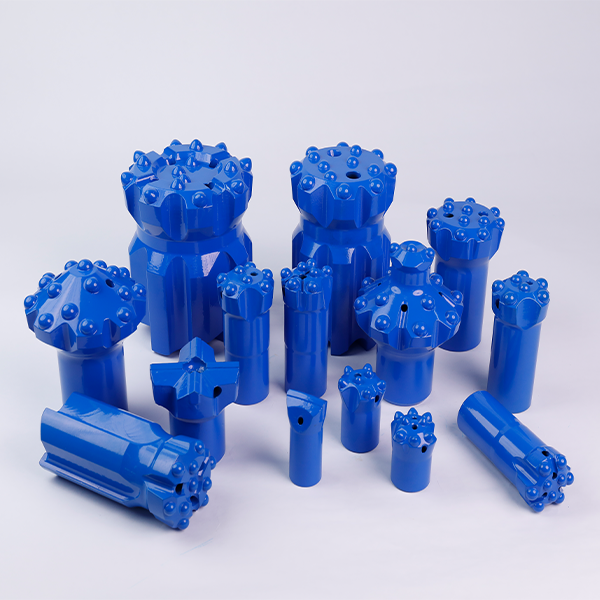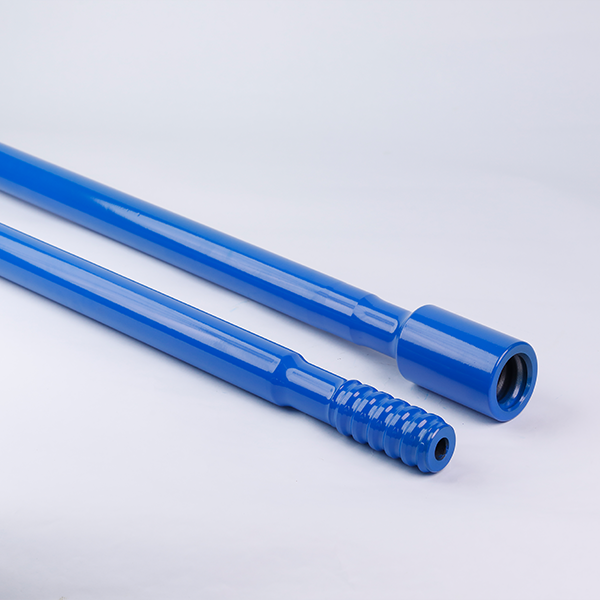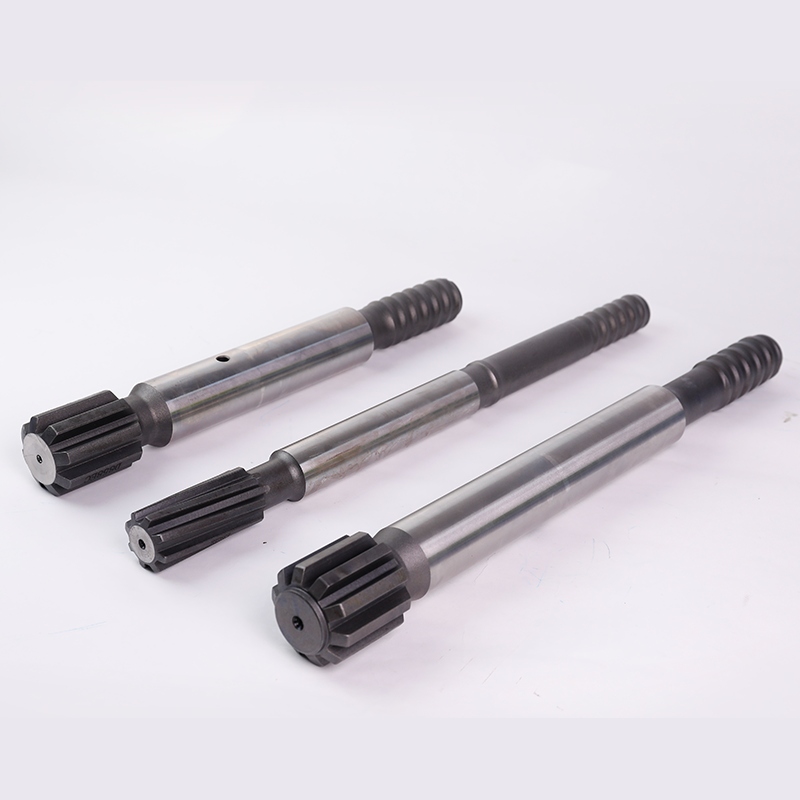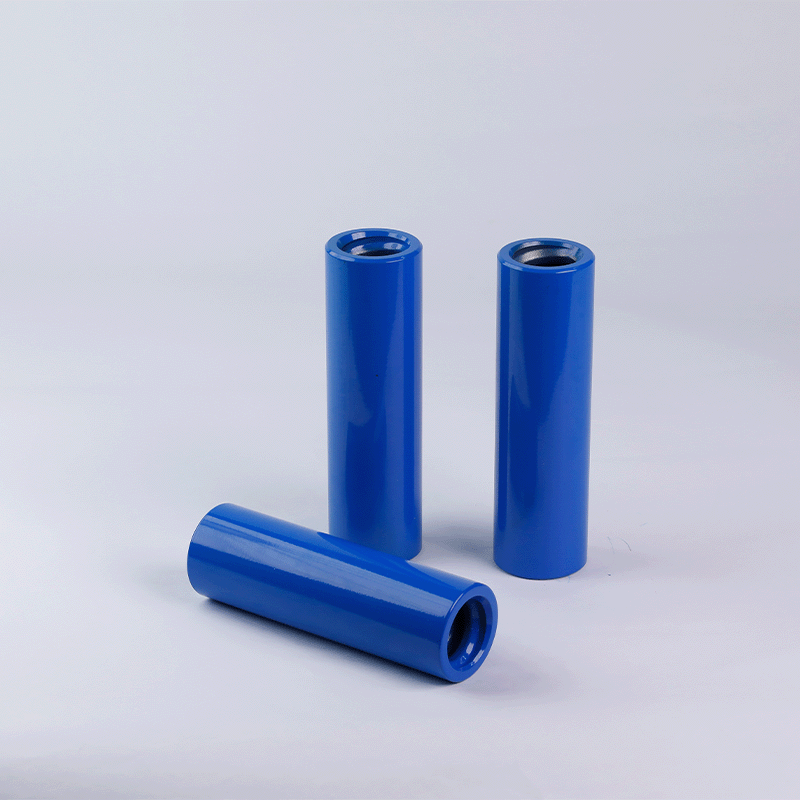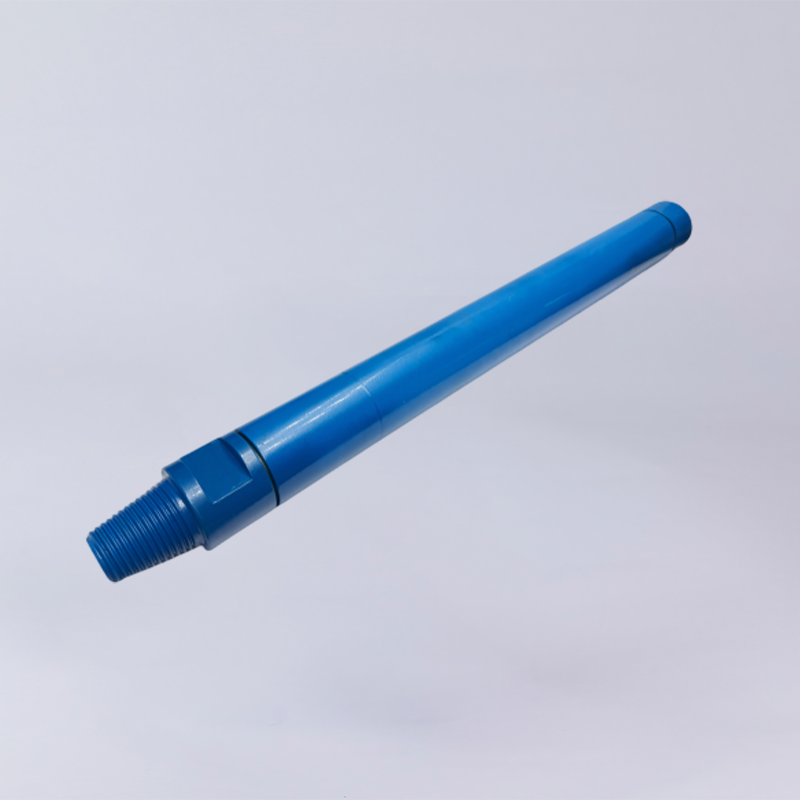In recent years, the DTH hammer has experienced rapid development and widespread market adoption due to its versatile applications in critical engineering projects such as dam reinforcement, slope support, mountain landslide control, and foundation uplift control. Its ability to deliver high-efficiency drilling across diverse scenarios solidifies its position as an indispensable tool in modern construction and mining operations.
We have previously introduced what are the application advantages of DTH hammers, different from the rock drill, the DTH hammer cannot be used alone. As an important part of the DTH drilling rig, it is mainly used to provide the drill bit with an axial reciprocating rock crushing force, cool the drill bit, and carry cuttings. Although it has stable performance, a simple and reliable internal structure, and easy assembly and disassembly, it will inevitably break down.
To facilitate your troubleshooting in time, this article will analyze in detail the causes of the DTH hammer failure and provide corresponding solutions for reference.
Five reasons for the failure of the DTH hammer
In general, there are many reasons for the failure of the DTH hammer, the main manifestations are the non-impact of the DTH hammer, weak impact, intermittent impact, etc. The specific performance is the following five points.
Processing defects
The match between the piston and the cylinder liner of the DTH hammer is relatively tight, the matching length is long, and the machining accuracy and surface smoothness are required to be high, which has very high requirements for the cylindricity of the piston and the cylinder liner. If the cylindricity is not guaranteed, the piston will be stuck in a direction or intermittently, and the drill pipe may eventually have to be lifted and unloaded frequently for DTH hammer maintenance.
In addition, the rigidity of the outer casing of the DTH hammer is also an important factor restricting the service life. If its rigidity is poor, the DTH hammer will deform due to frequent collision with the borehole wall during drilling. When the DTH hammer is not working, we need to vibrate, disassemble, and clean it, which will aggravate the deformation of the outer casing of the DTH hammer. The deformation of the outer casing will cause the internal parts to be stuck, making it impossible to disassemble. Finally, the DTH hammer scraps.
The drill bit is stuck
The drill bit and the DTH hammer are splines matched, the fitting clearance is relatively large, and the spline tail of the drill bit of many types of DTH hammers can expose the matching spline sleeve. If the cuttings are wet, it is easy to form bit balling and stick it to the drill bit. If this condition is not improved in time, the bit balling will enter the spline fitting gap, affecting the effective transmission of the impact power of the DTH hammer piston. What’s worse, the drill bit and the spline sleeve may be stuck together.
Insufficient or no lubrication leads to premature wear or damage
If the lubricating oil cannot reach the impact structure of the DTH hammer, it will cause premature wear. We can check the lubrication device, inject oil from the top of the DTH hammer, or increase the oil content of the compressed air to solve the problem.
The impact structure does not work or is not normal
Four reasons lead to this kind of failure in the DTH hammer.
A. The gas channel is blocked.
B. The gap between the piston and the inner and outer cylinders is too large, and so is the gap between the piston and the air distributor.
C. The DTH hammer is blocked by dirt.
D. The piston or the tailpipe of the drill bit is broken.
We can also use the following four methods to troubleshoot the fault.
A. Check the air pressure to make sure the air passage is clear.
B. Disassemble the DTH hammer, check the wear condition, and replace the worn parts.
C. Disassemble the DTH hammer and clean all the internal parts.
D. Disassemble the DTH hammer and replace pistons or drill bits.
The drill bit comes off
When the DTH hammer is working without right-handed rotation, it can cause the drill bit to fall off. We can hook the detached part and ensure the right-handed rotation during drilling and lifting to resolve such failures.
In addition to the above failure causes, we may encounter new failures during use. Understanding and analyzing the failure causes of the DTH hammer will not only help prolong the service life of the equipment but also help improve the structure and process of the DTH hammer.
After understanding the root causes of the DTH hammer failure, let’s explore the critical impacts it may have on drilling operations and project outcomes.
Impact Assessment of the DTH Hammer After Failure
Operational Disruptions
Project Delays:
Hindering the overall progress of the project.
Delays in slope support operations may destabilize construction sites, requiring costly remediation.
Downtime for repairs disrupts workflows, especially in mountain landslide control projects where rapid response is essential.
Financial Losses
Repair Costs:
Replacement of damaged components like DTH drill pipes or carbide buttons incur high expenses.
Extended Equipment Rentals:
Prolonged downtime forces extended use of auxiliary machinery such as down-the-hole drills or pneumatic rock drills.
Efficiency Degradation
Slower Drilling Rates:
Issues like insufficient impact force or clogged cuttings removal reduce drilling speed, particularly in hard rock or fractured strata.
Increased Energy Consumption:
Poorly functioning hammers require more power to maintain baseline performance, raising operational costs.
Safety Risks
Equipment Instability:
Misaligned internal strap centralizers may cause vibrations, endangering crews during slope support or micro piles installation.
Environmental Hazards:
Excessive noise or vibrations in ecologically sensitive areas violate compliance standards.
Reputational Damage
Client Dissatisfaction:
Repeated failures in critical projects erode trust and harm long-term partnerships.
Market Competitiveness:
Poor reliability compared to competitors may lead to a loss of bids for high-stakes contracts.
Of course, the occurrence of failures is not the result we want to see, but to reduce the failures of the DTH hammer, we also need to maintain it in daily use. The failure of a DTH hammer can lead to severe consequences such as project delays, cost overruns, and safety hazards. To prevent these adverse effects, it is crucial to implement rigorous daily maintenance and operational best practices. Next, we also list 8 daily maintenance tasks for your reference.
8 daily maintenance to Address the DTH Hammer Failures
Ensure Correct Rotation Direction
Since the joints of the DTH hammer are all right-handed threads, always ensure right-rotation during drilling. Incorrect rotation can lead to loosening of the joints, which may cause the hammer to malfunction. Regularly check the rotation mechanism to make sure it is operating as expected and providing the right-hand rotation required for the DTH hammer's proper functioning.
Optimize Initial Drilling Parameters
At the start of hole drilling, use the minimum impact and propulsion force. This allows the drill bit to smoothly enter the rock without causing excessive stress on the DTH hammer. By doing so, you can prevent premature wear and potential damage to the internal components of the hammer. Adjust the impact and propulsion force gradually as the drill bit penetrates deeper into the rock formation.
Match the Propulsion Force with the Drilling Tools Weight
It is crucial to match the propulsion force with the weight of the drilling tools. The thrust must vary according to the weight of the drilling tools. An improper balance between thrust and tool weight can lead to inefficient operation of the DTH hammer and may cause it to fail over time. Regularly assess the weight of the drilling tools and adjust the propulsion force settings accordingly.
Determine Appropriate Rotation Speed
The rotary speed of the DTH hammer generally ranges from 15 - 80 rpm. Determine the rotation speed based on the diameter of the drill bit and the rock formation conditions. Under the same conditions, a larger drill bit diameter and harder rock require a lower rotation speed. Incorrect rotation speed can cause excessive wear on the drill bit and the DTH hammer itself, potentially failing. Continuously monitor the rock conditions and adjust the rotation speed as needed.
Regularly Clean the Hole Bottom
Since blockages and cavities can lead to stuck drills, it is necessary to regularly use the DTH hammer to blow and clean the bottom of the hole. Accumulated debris in the hole can prevent the proper operation of the DTH hammer, such as restricting the movement of the piston or causing uneven stress on the drill bit. Establish a regular cleaning schedule based on the drilling conditions.
Ensure Proper Lubrication
The proper lubrication of the DTH hammer should never be ignored. Lack of lubrication will accelerate the wear of the DTH hammer and may even cause severe damage. Regularly check the lubrication levels and use the recommended lubricants for the DTH hammer. Follow the manufacturer's guidelines for lubrication intervals.
Protect Against Contamination During Rod Connection
During the rod connection process, rock ballast and various impurities can fall into the DTH hammer. To prevent this, always cover the threaded end of the loosened drill pipe. This ensures the drill pipe does not stick to rock ballast and dust, which could otherwise enter the hammer and cause internal damage or clogging. Make sure workers receive proper training on the use of drill pipe.
Conduct Regular End - of - Work Checks
At the end of each work session, thoroughly check the DTH hammer and associated equipment. Promptly address any issues found during the inspection. Minor problems left unaddressed can quickly escalate into major failures. Create a detailed checklist for the end-of-work checks to ensure that all critical components of the DTH hammer are inspected.
This is all about the daily maintenance of the DTH hammer. By adhering strictly to these maintenance measures, we can significantly enhance the performance and longevity of the DTH hammer.
Conclusion
In summary, the DTH hammer’s longevity and efficiency hinge on understanding its failure causes and implementing rigorous daily maintenance practices. By proactively addressing wear in critical components, enterprises extend service life in high-stress applications, reduce costs by avoiding downtime in projects, and enhance efficiency across diverse formations. Adopt these best practices to optimize operations, cut costs, and secure long-term profitability in demanding engineering environments.

